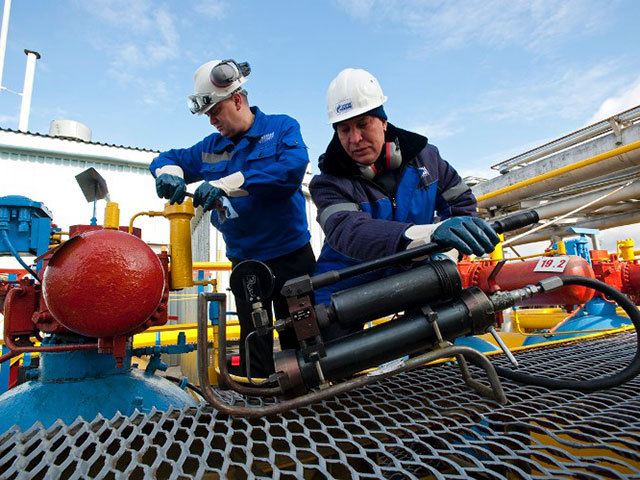
Europe’s appetite for natural gas is leading to a growth “renaissance” as its stores of the fuel languish at the lowest levels since 2013, according to Gazprom PJSC.
Europe’s appetite for natural gas will probably meet or even exceed last year’s growth as the region needs to replenish its lowest gas storage levels since 2013, according to Gazprom PJSC.
A “conservative estimate” by the world’s biggest exporter is that Europe’s demand may increase by about 5 percent this year, Deputy Chief Executive Officer Alexander Medvedev said Thursday in an interview in Hong Kong. The state-run company, which supplied record volumes to Europe last year and met more than a third of consumption, sees its 2017 shipments of “no less than in 2016,” he said.
The European Union’s gas demand increased in 2015 after four years of declines. After the coldest January in seven years and plunging output at domestic fields, the region is getting increasingly dependent on foreign supplies of the fuel mainly used in heating. And the low storage levels aren’t lost on Medvedev.
“We see a renaissance now, so the 5 percent growth is a realistic figure,” Medvedev said. “Meanwhile, the production is falling and will fall further.”
European gas consumption rose by 4.8 percent in 2016, according to a Gazprom estimate. By comparison, regional production will slump by 27 percent from 2014 through 2020, according to the International Energy Agency in Paris.
Europe needs “to fill in its storages, which have been emptied out — we know that from looking at our storage, and from our colleagues,” Medvedev said. Nations may need to withdraw gas from storage during the summer months amid rising demand and maintenance on pipelines, he said.
Gazprom sees its market share in Europe stable or even increasing to 35 percent by 2025, executives said earlier this week meeting investors in Singapore and Hong Kong.
Click here to read more about how Russia is Seen dominating in Europe
Norway, Russia’s main rival in Europe, will most likely maintain its shipments close to current levels, Medvedev said.
London-based analysts from Energy Aspects Ltd. to BMI Research forecast a boost in liquefied natural gas supplies to Europe this summer as Gazprom’s prices, mostly linked to oil, are losing a relative advantage amid a recovery in crude costs. Medvedev shrugged off any risks, saying Asia will remain a preferable destination for LNG.
“The Asian premium is still in place,” Medvedev said. “If you take all the costs, it’s still more profitable to supply to Asia.”
Should more cargoes start to arrive in Europe, Gazprom is well placed to compete, according to Medvedev.
The company won’t need any “radical” changes in its pricing formulas since it now has a hybrid pricing system with some volumes supplied with a link to market rates and some linked to oil, the tool which has been used in Europe for the past four decades.
Some crude-linked contracts also have “limiters” — for a minimal and maximal price calculated under formulas — which are linked to markets as well, he said. Europe’s markets are still lacking the liquidity to base all supply contracts on regional contracts, he said.
Recommended for you
